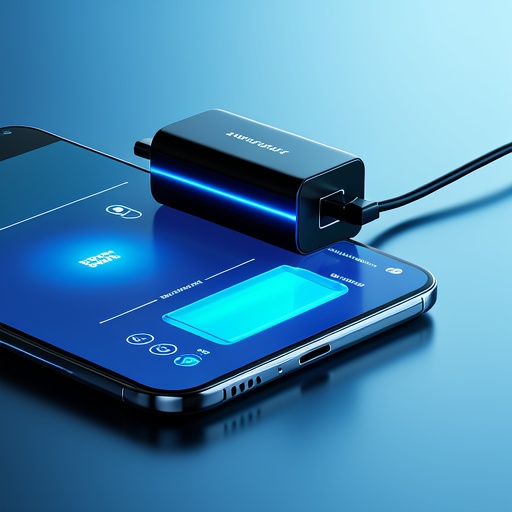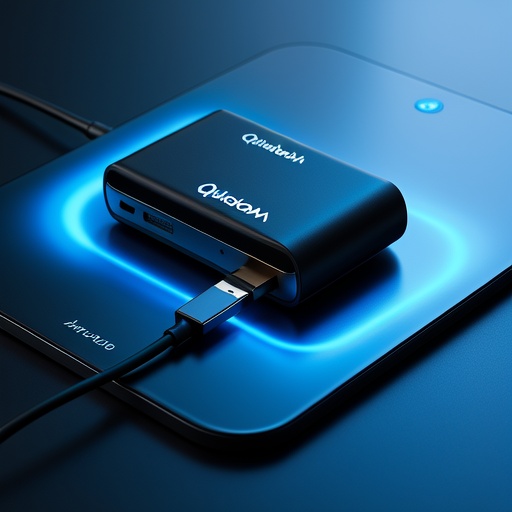Why Phones Charge Faster with a Fast Charger
 Phones charge faster with a fast charger due to several key factors related to power delivery and battery technology.
Phones charge faster with a fast charger due to several key factors related to power delivery and battery technology.
 First and foremost, the power output of a fast charger is significantly higher than that of a standard charger. Power is measured in watts (W) and is calculated as the product of voltage (V) and current (A), following the formula P = V × I. A standard charger might have an output of 5 watts (e.g., 5V at 1A), while a fast charger can deliver 18 watts or more. For instance, some fast chargers operate at 9V and 2A, resulting in a power output of 18W. With more power available, the charger can transfer a larger amount of electrical energy to the phone's battery in a shorter period. This means that the battery can reach its full charge capacity much quicker because it is receiving a higher - rate of energy input.
First and foremost, the power output of a fast charger is significantly higher than that of a standard charger. Power is measured in watts (W) and is calculated as the product of voltage (V) and current (A), following the formula P = V × I. A standard charger might have an output of 5 watts (e.g., 5V at 1A), while a fast charger can deliver 18 watts or more. For instance, some fast chargers operate at 9V and 2A, resulting in a power output of 18W. With more power available, the charger can transfer a larger amount of electrical energy to the phone's battery in a shorter period. This means that the battery can reach its full charge capacity much quicker because it is receiving a higher - rate of energy input.
 Another important aspect is the charger's ability to adjust the charging parameters according to the phone's battery requirements. Modern smartphones are equipped with advanced battery management systems (BMS). These systems communicate with the fast charger to optimize the charging process. The BMS can determine the battery's state of charge, temperature, and other vital parameters. Based on this information, the charger can adjust the voltage and current levels. For example, when the battery is at a low state of charge, the charger can supply a higher current to quickly add charge. As the battery approaches full capacity, the charger reduces the current to prevent over - charging, which could damage the battery. This dynamic adjustment of charging parameters allows for a more efficient and faster charging process while still ensuring the safety and longevity of the battery.
Another important aspect is the charger's ability to adjust the charging parameters according to the phone's battery requirements. Modern smartphones are equipped with advanced battery management systems (BMS). These systems communicate with the fast charger to optimize the charging process. The BMS can determine the battery's state of charge, temperature, and other vital parameters. Based on this information, the charger can adjust the voltage and current levels. For example, when the battery is at a low state of charge, the charger can supply a higher current to quickly add charge. As the battery approaches full capacity, the charger reduces the current to prevent over - charging, which could damage the battery. This dynamic adjustment of charging parameters allows for a more efficient and faster charging process while still ensuring the safety and longevity of the battery.
 In addition, fast chargers often use technologies like Qualcomm Quick Charge or USB Power Delivery (USB - PD). These standards are designed to enable higher power transfer between the charger and the device. They provide a common framework for devices and chargers to communicate and negotiate the appropriate power levels. For example, USB - PD can support a wide range of power levels, from 5W to over 100W in some cases. This flexibility allows different types of devices, including smartphones, tablets, and laptops, to charge at the optimal power for their specific battery requirements, resulting in faster charging times compared to traditional charging methods.
In addition, fast chargers often use technologies like Qualcomm Quick Charge or USB Power Delivery (USB - PD). These standards are designed to enable higher power transfer between the charger and the device. They provide a common framework for devices and chargers to communicate and negotiate the appropriate power levels. For example, USB - PD can support a wide range of power levels, from 5W to over 100W in some cases. This flexibility allows different types of devices, including smartphones, tablets, and laptops, to charge at the optimal power for their specific battery requirements, resulting in faster charging times compared to traditional charging methods.
In conclusion, the combination of higher power output, intelligent battery management, and advanced charging technologies is what enables phones to charge faster with a fast charger. These features work together to provide a more efficient and rapid charging experience for smartphone users.










